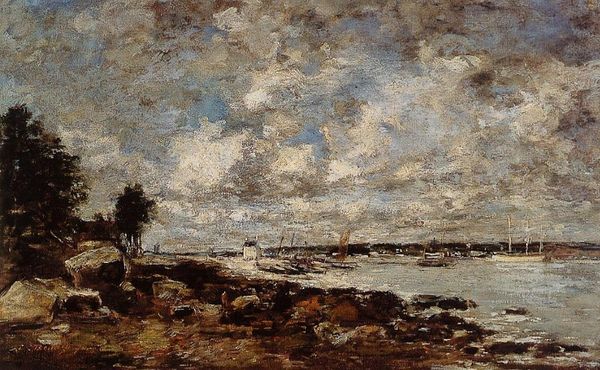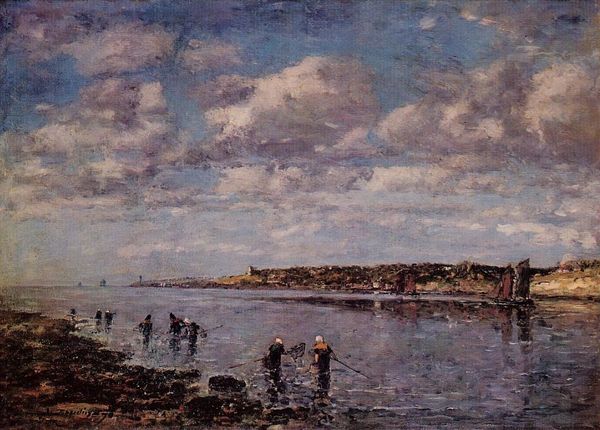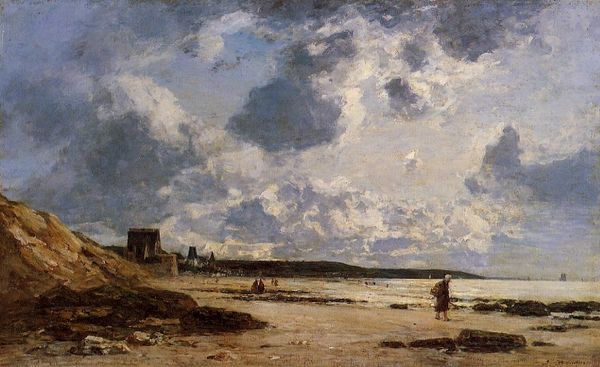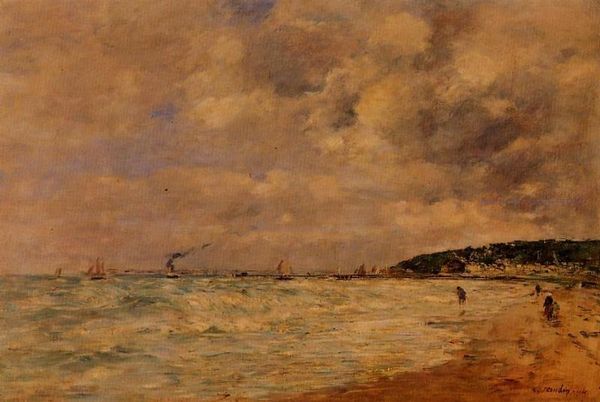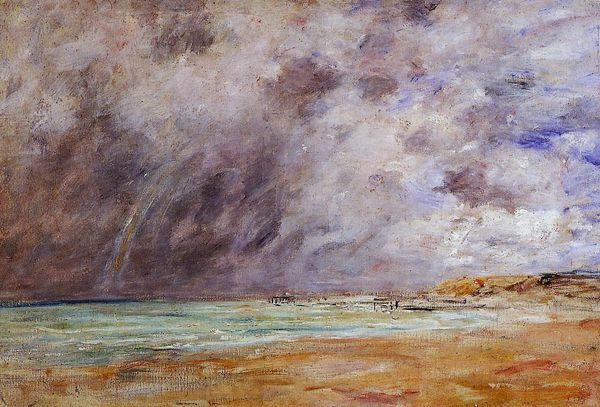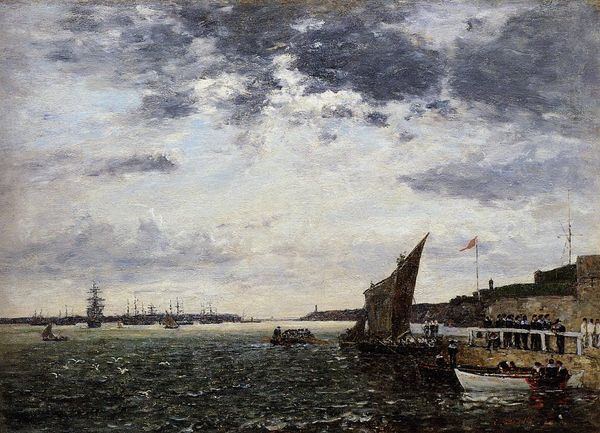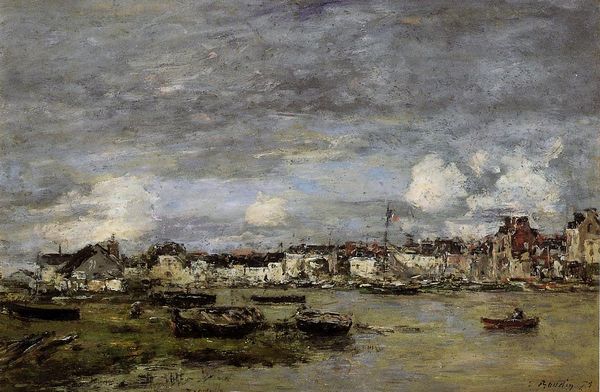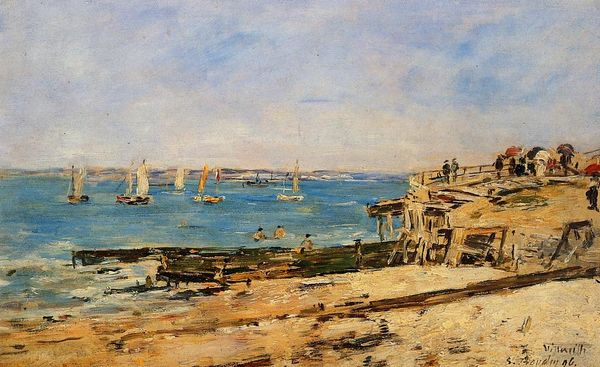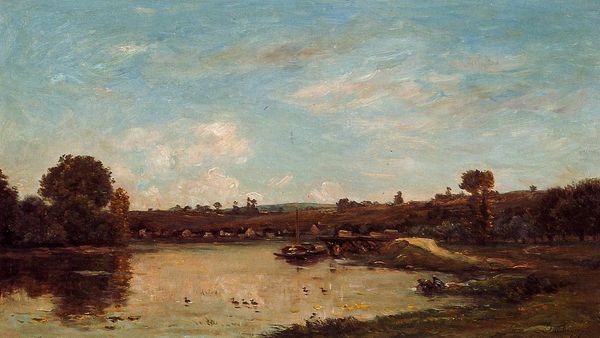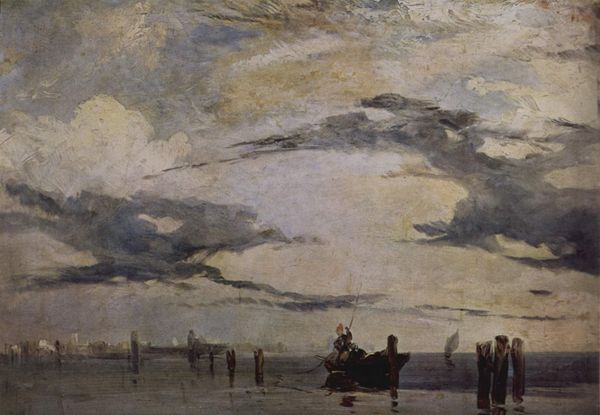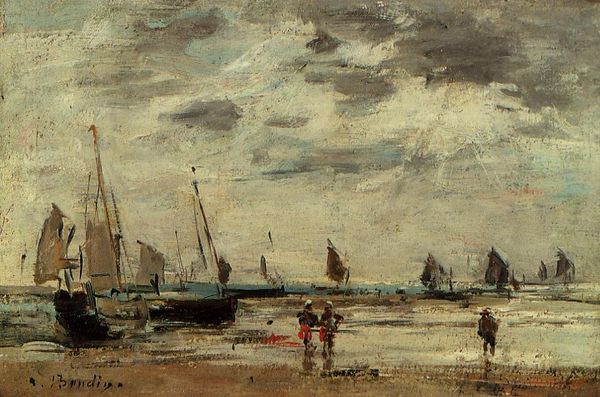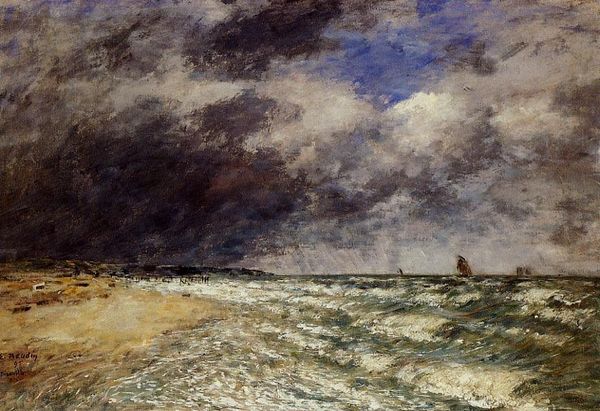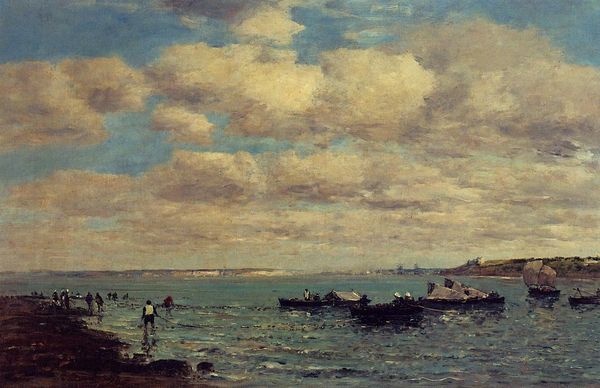
painting, plein-air, oil-paint
#
sky
#
painting
#
impressionism
#
plein-air
#
oil-paint
#
landscape
#
impressionist landscape
#
oil painting
#
realism
Copyright: Public domain
Editor: Here we have Eugène Boudin's "The Coastline at Plougastel" from 1869, an oil painting that captures a rather subdued coastal scene. The overall mood is one of quiet industry. I'm curious, what do you see in this piece that might not be immediately apparent? Curator: I see an artist deeply engaged with the realities of his time. Boudin's choice of painting *en plein air* wasn't just about capturing light; it was about confronting the social conditions of artistic production. This wasn't some romanticized studio creation. He was there, on the beach, interacting, however tangentially, with the people whose livelihoods depended on the sea. Consider how the brushstrokes themselves—loose, quick, and efficient—mirror the labor happening along that coastline. Do you notice that? Editor: That's a great point. The directness of the brushwork does seem to reflect a kind of…labor. The physical act of painting becomes another form of work. So, you're suggesting the *how* of the painting is as important as the *what*? Curator: Exactly! The materiality of the paint, the canvas itself, and the act of its application speaks to a dialogue between the artist, his materials, and the societal forces at play. The hazy atmosphere isn’t just pretty; it is the effect of human intervention on nature – the smoke and haze produced by industrial means, not just the charming atmospheric effects as captured from a distance. The sea wasn’t a blank background but a provider to those laborers who appear. Consider the relationship of these individuals to the viewer and consider, as well, where the artist places himself relative to both? Editor: That shifts my perspective entirely. I had thought of Impressionism primarily in terms of capturing light and color. Curator: Impressionism was innovative on the surface level, but to view through a materialist lens prompts us to probe how the artist positioned themselves in their environment. Editor: I’m now rethinking how I approach Impressionism. Seeing it through this lens gives me a lot to ponder! Curator: Indeed, It invites questioning and examining the artist's hand within an artform’s context, even within what seems like a fleeting moment.
Comments
No comments
Be the first to comment and join the conversation on the ultimate creative platform.
